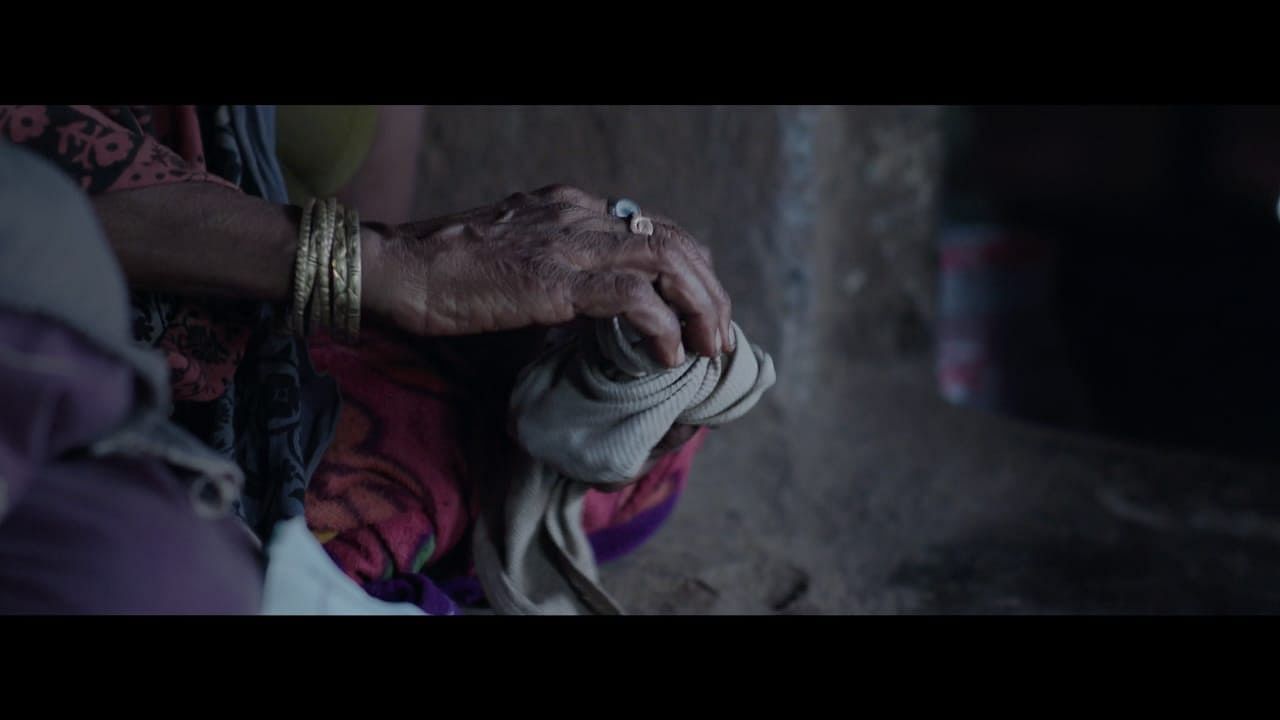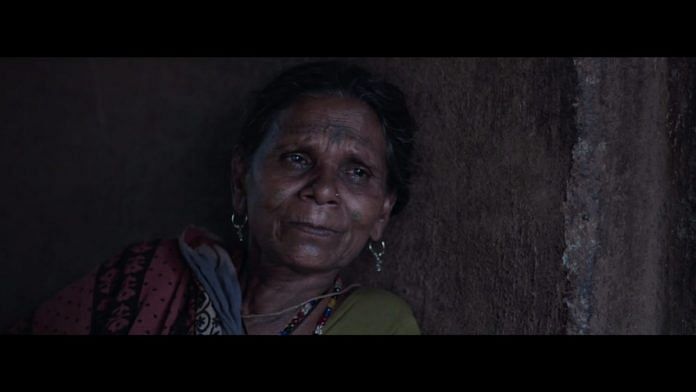New Delhi: The scene pans to beautiful landscapes seen against a spider’s web. The shots are stitched together slowly, taking time to fade out of the screen. This is the setting for Testimony of Ana, an ugly, vile story we’re about to hear, on a land where it looks like nothing could go wrong.
A documentary by Sachin Dheeraj Mudigonda, it tells the story of Anaben Pawar. It welcomes you to her village, where you’re invited to listen to her story. Though unfortunately, Ana’s story isn’t unheard of, it is possibly the first time a certain audience will listen to it so intimately.
The film premiered at the Oscar-qualifying Hot Docs Canadian International Documentary Film Festival that took place between 29 April and 9 May.
Also read: Crimes against SC/ST women, children up 15%, but conviction rate low, says House panel
Branding of a ‘witch’
Mudigonda had heard of Ana through a lawyer in Ahmedabad, who also happens to be the line producer of the film. When he first approached Ana, she was reluctant to share her story. Eventually, she warmed up to them.
“It took us a lot of time to gain her trust, and assure her that we were there just to listen to her story, and take it to the outside world. This took us a few weeks. Once she trusted us, she let us closer,” he said.
When Ana’s father died, he left his property to her since he didn’t have any sons. This didn’t bode well with the villagers who, one night in 2017, branded Ana a witch and attacked her, according to Mudigonda.
“Any woman who dares to stand against the norms set is in the danger of being branded a witch by society,” he told ThePrint.
The villagers had hired a witch hunter, who Ana remembers as ‘Bhagat’, to target her. On that fateful night, they surrounded her house and beat her to a pulp apart from sexually assaulting her, Ana said. Her young daughter was threatened too while her husband sustained some injuries, she told the film crew.

Ana continues to stay in that very house in that very village. This, the filmmaker said, highlights how resilient Ana really is.
“Not only does Ana, very bravely, resist all the pain the society tries to inflict on her, she also shows incredible strength in deciding to stay at the place … in that very same place where she was tortured. She’s perhaps the strongest woman I’ve met in my life.”
Witch branding is a common occurrence in India. Between 2000 to 2016, 2,500 women were killed in witch hunts, according to the National Crime Records Bureau.
Also read: State anti-superstition laws not enough. India needs a central law, focus on victim not crime
Nature and trauma
When you hear Ana narrate the incident in her voice, Mudigonda chooses to show you the vast landscapes surrounding her village located in Ahwa, the southern part of Gujarat, which makes it feel like you’re standing right next to her.
Asked why he chose nature instead of any kind of symbolism to depict Ana’s story, Mudigonda said, “Ana is an Adivasi woman who regularly interacts with nature around her and shares a strong connection with it … that came out even in the way she worshipped. She is deeply connected to nature. That resonated very strongly with me.”
“So we just went to film the landscape. The huge, vast landscapes. However, the idea of it came to me only when I was editing. I thought maybe I should juxtapose her voice with the images of nature. Also, historically, ‘witches’ were midwives who derived their powers from mother nature. They were spiritual healers. And here is this woman, who is branded a witch, by the contemporary society. I just wanted to counter that,” he added.
Ana is now a woman who’s angry at her community and at her government. She said the police didn’t help her and neither did the government. She carries around a small potli of ‘evidence’ — it has her broken bangles, some pieces of the clothes she was wearing the night she was attacked as well as strands of hair that were pulled out during the assault. She refuses to hand this over to the police, and says will only show it to a “big judge”.
Four people accused of instigating the violence were arrested, two of whom are currently out on bail.
(Edited by Manasa Mohan)
Also read: Women ran the beer industry — then witch rumours poured in



